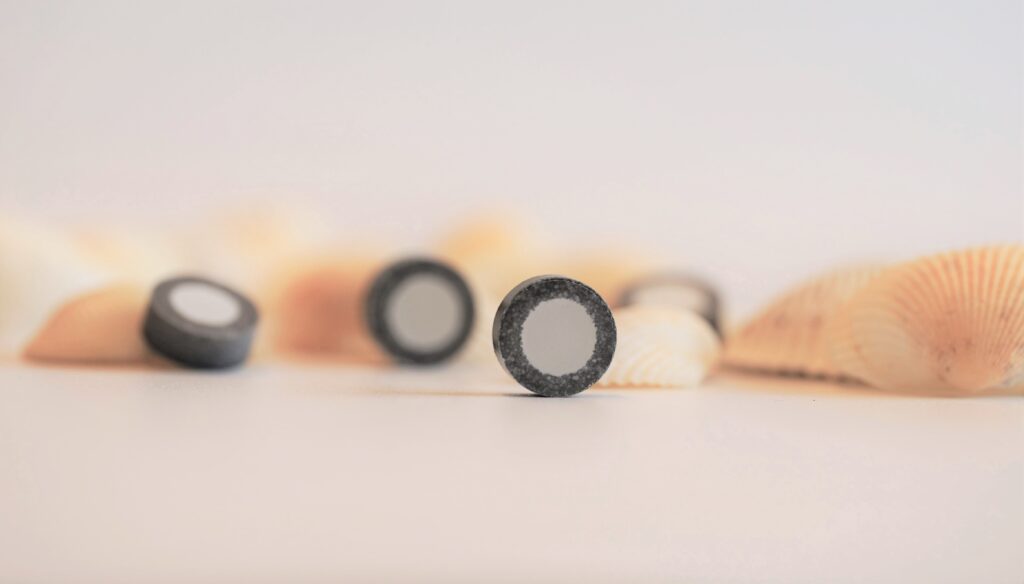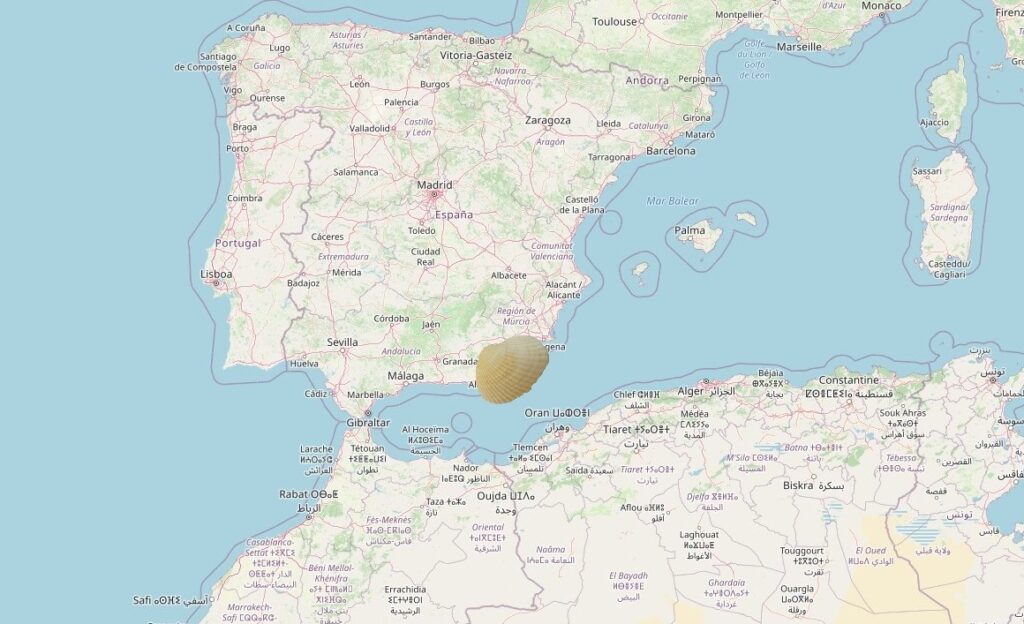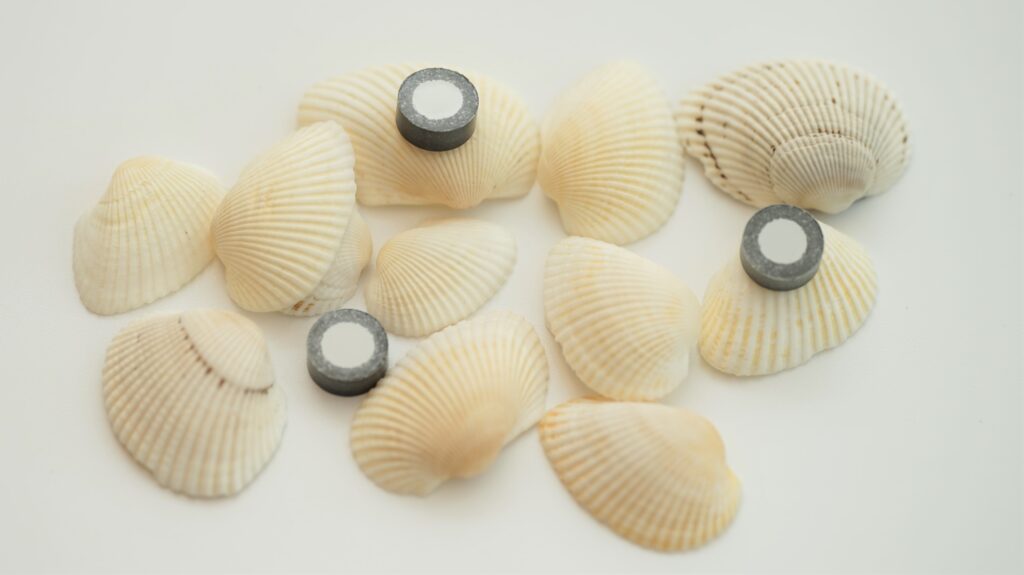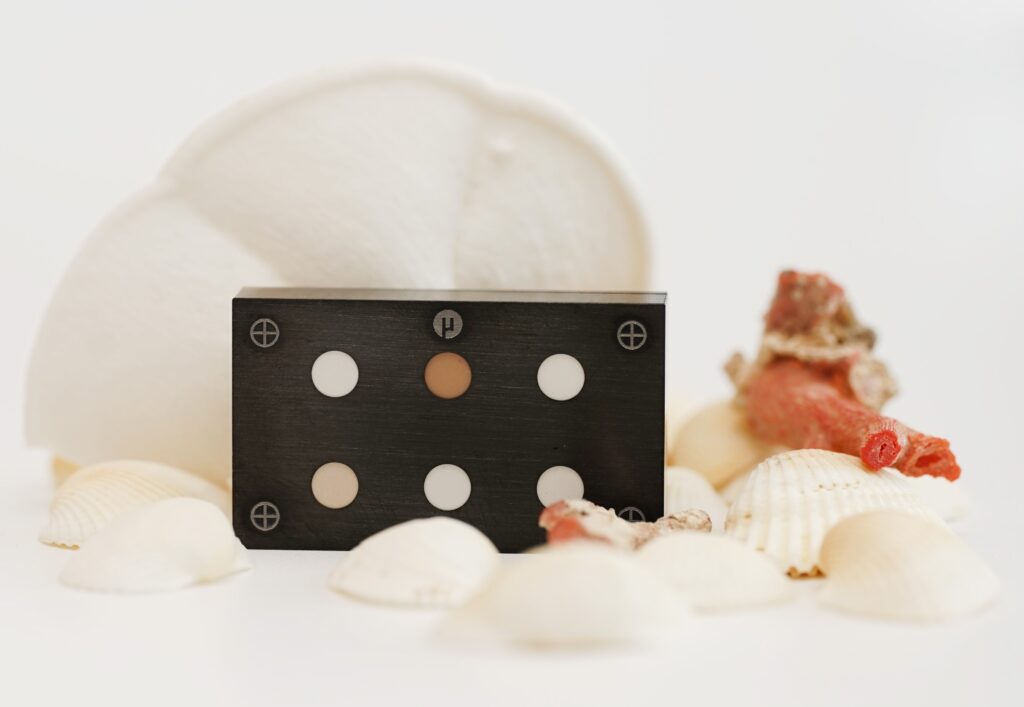Bivalve Playa de Los Muertos Nano-Pellet (BPLM-NP) is our next certified Nano-Pellet, which myStandards produced following the provisions of ISO 17034. Here you will learn why a mussel was chosen as our next certified reference material and what its applications are.

Mussels and their impact on the climate & climate research
Mussels are molluscs that surround themselves with a calcareous shell consisting of two parts. 80% of all mussels live in salt water, the rest in brackish and fresh water. Most species live at a depth of between 0 – 100 m, but some can be found at depths of up to 11,000 m. Mussels live on the seabed and are hardly mobile. They feed on plankton, which they filter from the water, and have a life expectancy of 1 – 500 years. People use the soft body of the mussels as food and the mussel shells and mussel pearls as jewellery. However, the shells of the mussel are also very interesting for climate research.
Mussel shells consist mainly of calcium carbonate (CaCO3). The mussel also incorporates other elements such as magnesium (Mg) and strontium (Sr) into the calcium carbonate matrix. The ratio of Mg to Ca depends on the water temperature at the time when the layer of the mussel shell was formed. Therefore, these ratios can be used to reconstruct the water temperatures of past years.
In addition, the mussels also incorporate trace elements into their shells depending on the concentration prevailing in the water. This makes it possible to reconstruct the pollution of the waters in past years.

Why mussel shells for the development of a certified reference material
As described in the previous section mussels are important for palaeoceanography. Therefore, having a suitable reference material is vitally important. This assessment is confirmed by the fact, that our mussel reference material JCt-1-NP is highly sought after and the stock is almost exhausted. Recreating it is currently not possible, which is why, at the beginning of 2021, decided to create our own mussel certified reference material and add it to our portfolio.
The path from mussel shells to Nano-Powder to Nano-Pellet
After having chosen the material for our next certified Nano-Pellet, a production plan, following the provisions of ISO 17034 was made. The first step in this plan was thoroughly cleaning the starting material, i.e. 250 g of mussel shells. The cleaned shells were crushed manually in an agate pestle and mortar to a particle-size < 2 mm. The particles were then processed by our team by means of wet-milling, freeze-drying and homogenisation in our production laboratory. Thereafter, the material’s identity was confirmed by X-ray diffraction. Subsequently, the powder was divided using a rotary sample splitter yielding a total of 20 batches contained in glass vials. For storage the vials are vacuum-sealed with silica-gel and stored in an automated desiccator. Batch number BPLM-NP-2021-05-B01 was completely pressed into 47 Nano-Pellets, 5 of which were checked for homogeneity and stability using LA-ICP-MS. The chemical analyses were performed in two ISO 17025 accredited laboratories.

After systematic sample evaluation the data were condensed into the certificate of analysis. The certificate contains the certified values including their combined and expanded uncertainties resulting from characterisation as well as homogeneity and stability testing. All these steps were performed meticulously following ISO 17034 and, according to this standard, are mandatory when calling a material or rather its attributed values certified.
You can find an example of our data evaluation and the certification report with further information on the BPLM-NP product page.
By the way, we are always interested in Feedback: In case you would like to see additional elements, isotopic ratios or further information which are not in the certificate or certification report feel free to contact us! It is possible to press Nano-Pellets out of the remaining powders for other methods, e.g., LIBS or micro-XRF. These Nano-Pellets, because they lack a homogeneity- and stability test, will not be designated as certified, but are very well characterised for their chemical composition.
BPLM-NP in the Paleoclimate-Set
With the launch of our new certified microanalytical reference material from a mussel, we would also like to expand our Paleoclimate-Set. The new Paleoclimate-Set includes 6 carbonate Nano-Pellets with a diameter of 10 mm packed in an aluminium mount in thin section format. The mount is CNC machined from aircraft grade aluminium and coated with Diamond Like Carbon (DLC). It is ideal for laser ablation (LA-ICP-MS) and simplifies handling and storage. The set consists of the following 6 carbonate standards: CRMS-NP (Coral), BPLM-NP (Mussel), SPLT-NP (Speleothem), NFHS-2-NP (Foraminifera), JCt-1-NP (Mussel) and ECRM-752-1-NP (Limestone). The small Paleoclimate set is of course still available.

BPLM-NP is the last certified reference material from the carbonate group that we are releasing this year. New certified materials from the mineral and iron ore groups will follow in the next few months, as well as other sets. Stay tuned!
To receive further information about our future projects, feel free to subscribe to our Newsletter here.
Latest news posts:
- How to Build Your Custom Pressed Pellet Set for XRF (32 mm)
- An exciting new project: the development of a Sulphide-Nano-Pellet as a reference material
- 32 mm Pressed Pellets for XRF – an alternative to the Nano-Pellets for XRF!
- New certified reference material from biotite: BTNO-Nano-Pellet
- Muscovite certified reference material: MSNA-Nano-Pellet
